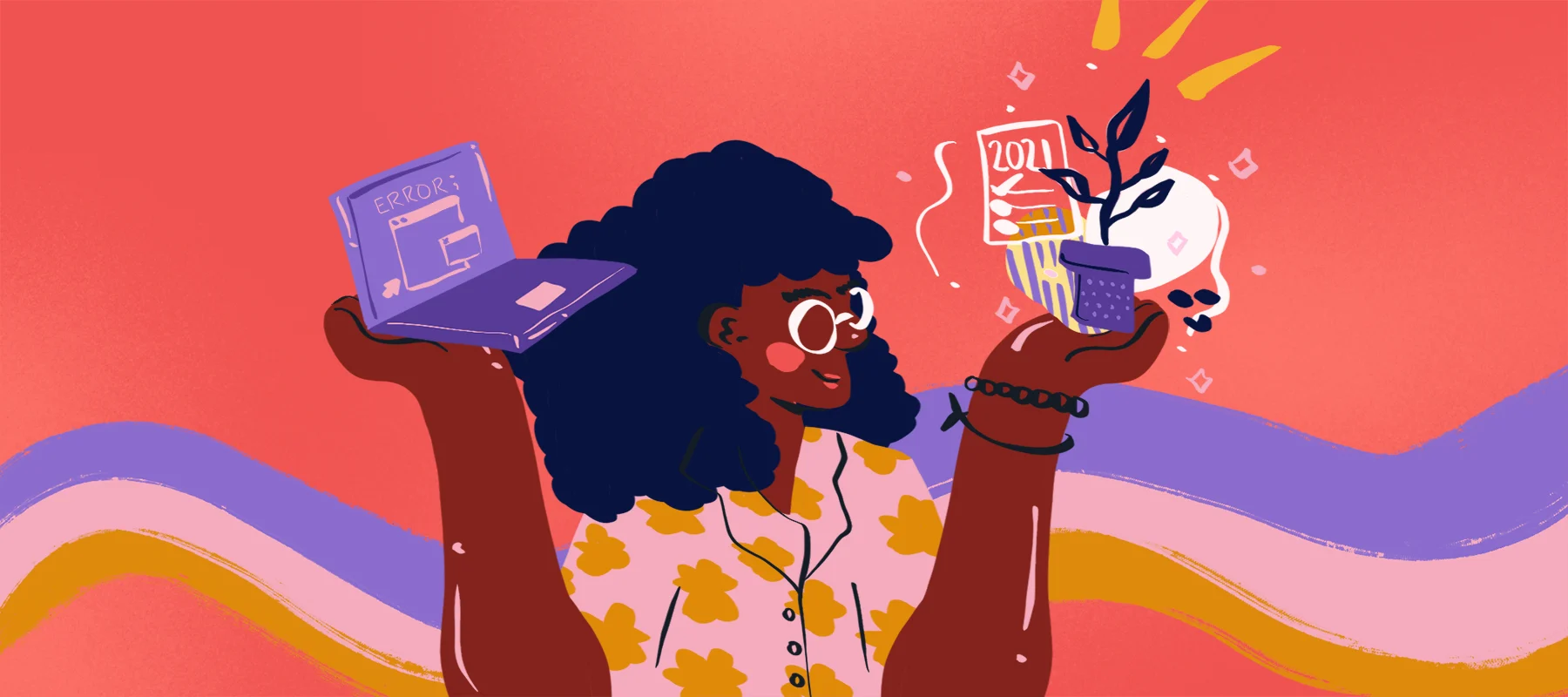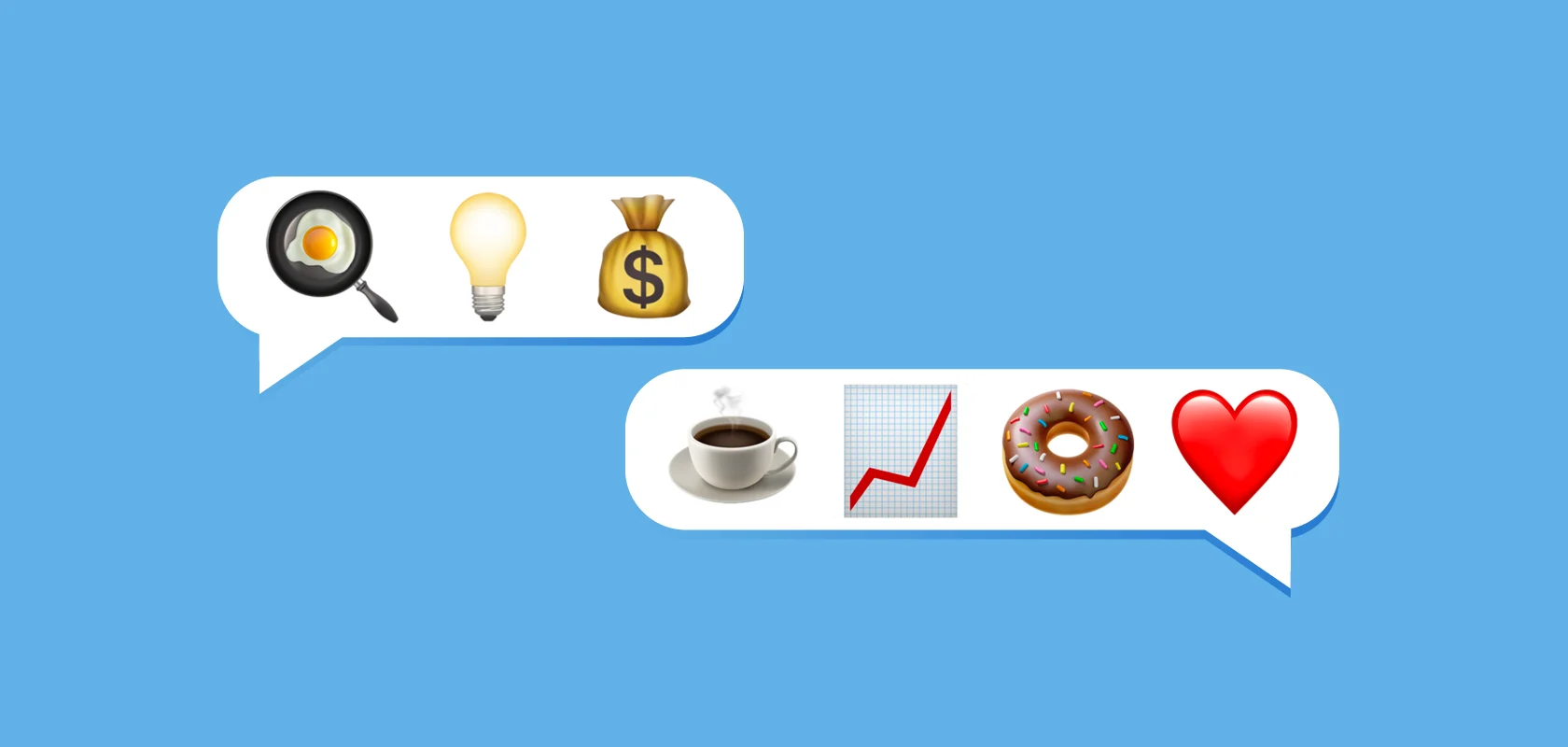How to Incorporate More Joy into Work
- 26 May 2021
- ByCamille Gomera-Tavarez

There are times when I’m in the middle of a project, staring at a blank Photoshop artboard, fantasizing about moving to an island and never having to create another thing for the rest of my life. I don’t want to look at art, I don’t want to touch a pencil, I don’t even want to be near a computer.
As frustrating as this feeling is, at the very least it provides me with useful information – that I’ve hit burnout and am in desperate need of a break. Making creative work is supposed to be fun and joyful, of course. But, when you’re designing ten versions of the same social graphic for a client and sending chain emails arguing over a shade of blue, it can be pretty easy to lose sight of the reason you decided to choose this career path in the first place.
It sucks when your outlet is also the thing that brings you stress. It's a universal problem, no matter what your job is. Once joy becomes work, it’s difficult to get that same spark back. So, how can we bring that joy back?
I feel like this is the question that I have yet to figure out an adequate, sustainable answer for. I’m still learning and growing into my own practices.
In times where people are especially isolated, I’ve noticed people either lose themselves completely in their projects or stop seeing the point in creating at all. Everyone has their own methods for creating the work they want to create and everyone has their own ways of dealing with mental blocks. For me, I’ve found that once I reach the point of admitting I’m in a funk, these are some of the ways I keep myself interested in creating anything at all.
1. Remember the things you actually want to do
When you're doing work for others, it can seem like you’re constantly pouring from an empty cup at the end of a work day and there’s not much left for you to pursue your own projects. There’s such a long list of things I have to get done every day, I often forget the personal projects I actually want to pursue. So I write them down. These can be your New Year's resolutions or goals for the year – learn Blender, paint more, read more, start a magazine. These are dreams and fantasies, which are things that just so happen to be full of joy. Even better is a long-term passion project that you can add to at your own pace and return to when you need it – like a YouTube channel, Instagram page, anthology, or blog.
Every once and a while, you just have to sit down and remember who you are and why you do what you do. When you’re burned out, taking out that list of goals and choosing one to bring to reality (or even just start on and swiftly abandon) can be super therapeutic. At the very least, it’s a welcome break from whatever is currently not bringing you joy.
2. If there’s no time, make time
It’s annoying I know. Spare time seems like the hardest thing to find. You’re not a machine and you can’t just crank out content at every waking moment. And you absolutely should be sleeping upwards of 8 hours a day and catching up on Real Housewives (no matter what billionaires and Steve Harvey have to say about it). I, for one, love a daytime nap.
However, when I need to freshen up my creative juices and there doesn’t seem to be any time to do it, it is vital to find a way to take a break from work. If nothing else, for my mental health and to reduce the likelihood of getting burned out. My therapist recommended scheduling weekly appointments on my work schedule ahead of time, so I can carve out time to work on personal projects without feeling guilty about taking time off work. Make creative dates with yourself, take a sick day, or start your morning early if you have to. Find time in your schedule that works for you.
3. Dig out the joy from the crap
If you have no choice but to work 24/7, that doesn’t necessarily mean that all is lost. You have to make money and keep your job, I get it. I’m there.
When I was in art school, one of the cheat codes for getting through five six-hour long courses every week was to simply find creative ways to double dip.
Say I need to make a website for a branding course and code an animation for a coding course. I could just use the website as an opportunity to explore coding animation and kill two birds with one stone. If you have a client that’s asking for a graphic and you’ve been really meaning to do some illustrating, ask them if the graphic might work better as an illustration. If you have to create the same boring poster five times, make a crazy out-of-the-box sixth poster for fun. The worst that can happen is that your boss or the client prefers the boring ones.
Find a way to incorporate what you want to do into what you have to do anyways. It’s a win-win for everyone.
4. Get out of your own head and into someone else’s
Sometimes things just get stale. I know that figuring out a logo design can sometimes feel like trying to solve a puzzle that doesn’t want to be solved. The pieces just aren’t coming together.
One of the worst parts of working from home is feeling isolated from a community and your coworkers. It felt like half of a work day was actually getting work done and the other half was just bouncing around ideas and joking with your peers. Hanging out and verbalizing ideas to others is a part of the joy that gets translated into your work. It’s a very key component of the collaborative creative process.
When you see your problem through someone else’s eyes, more often than not, someone else has the key to the puzzle. This is why digital workspaces have become popular, where you can work on Zoom alongside other people and chat or ask questions if you feel like it. Even just scheduling a casual video call with friends or coworkers to show them what you’re working on and get feedback can be immensely helpful in keeping you interested in your project.
5. Reframe productivity
In my personal view, the work I create is all connected. Whether it’s writing or designing or illustrating or coding a website, everything I do creatively is all a part of the same goal which is to follow my intuitions and make something from nothing. All of it is connected to who I am as a person and the things I’m interested in, whether I’m making it for myself or for a client.
For this reason, if it’s advancing my development as a human, it doesn't matter if I get paid for something I’m devoting my energy to or not. The point isn’t to monetize all of my hobbies. Creating something for a passion project is just as important and productive as the work you get paid to do. It’s all connected.
26 May 2021
Words by:Camille Gomera-Tavarez
Tags
- Share

